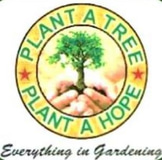After completing this programme, participants will be able to:
Identify plants by their local and botanical names
Implement the conservation plan of parks and gardens under the guidance of the conservation landscape architect
Manage heritage parks and gardens in accordance with the management’s plan
Supervise the garden activities and manage the gardeners
Demonstrate adherence to the hygiene and biosecurity guidelines of the garden area
Demonstrate proper presentation and interpretation of the garden
Handle the visitors cordially and take their feedback
Practice health and safety at the workplace
TRAINING STRUCTURE
Introduction:
Demonstrate general discipline in the classroom (Dos and Don’ts) Describe the roles and responsibilities of a Heritage Gardener *Explain the scope and importance of historical gardens and their conservation
Identify and name plants using their botanical names: Define the terminologies used in plant identification, classification and nomenclature eg family, genus, species, cultivar, variety and hybrid Describe the plant characteristics and how they can aid identification Identify and name plants using their botanical names along with their common names Write botanical names in correct format in accordance with the International codes for Nomenclature Identify non-indigenous, non-native, invasive and protected species and act accordingly *Ensure labels and other records are completed accurately
Execute the conservation plan of parks and gardens: Describe the eco-zones of India and their typologies Describe the development of different landscape in India across different eras or time-scape and their documented references Study the different historical gardens with appropriate literary reference Describe the typology of heritage landscapes- Temple, Monument or Garden Identify the environmental implications of the planned conservation works Assess the site conditions and explain the various factors affecting it Describe the site components-elements. Services laid at site- irrigation, drainage and other Mechanical, Electrical and Plumbing (MEP) Assess the procedure of the selection of the planting materials Describe the appropriateness of the plants along with their usage and the various rules and regulations for planting *Calculate the cost of resources, tools, equipment and machinery required for the planting and ongoing maintenance of the conservation works
Assist in the daily management of heritage parks and gardens: Describe the plant systematics- their stages of life- germination, pollination, growth, reproduction, propagation natural or aided Carry out transplantation of saplings Carry out lawn management by mowing, weeding, nutritive application, irrigation, washing, cleaning, insect/ pest management Demonstrate tree Management practices viz. Training/ Pruning/ Shaping, Fertilization, Basin Preparation, Irrigation, Washing and Uprooting of dead trees/ palms, tree protection with staking/ tree guard Demonstrate shrubs and ground cover management practices, viz. cutting/ training/ pruning, watering, washing, weeding and bed cleaning Describe the new age mechanisms of mechanical broadcasters, mechanical tree up-rooter, mechanical saw Explain the irrigation processes and their components: Quick Coupling Valves (QCVs), sprinklers, drip irrigation, rain guns, etc Assess the plant character for efficient mortality / casualty replacement Carry out nursery preparation and management Carry out plant propagation activities Demonstrate composting and vermicomposting
Oversee garden/park activities and ensure hygiene & biosecurity in the garden: Conduct inspection of the facility and report any anomalies Supervise the work of gardeners Carry out maintenance of wear-tear of the garden components Demonstrate adherence to proper security of the garden to prevent any damage and vandalism by miscreants Describe the OHS legislative requirements and Codes of Practice Implement and manage all site hygiene and biosecurity procedures and protocols Maintain record as per the legal requirements for site hygiene and biosecurity
Ensure proper presentation, interpretation and cordial handling of visitors: Work on the proper display of the facility Describe the historical facts/data pertaining to the layout of the historical site Build stories around the historical facts and data to narrate to the visitors Demonstrate communication skills to engage with the customers Demonstrate the basic etiquette of presentation of self before the visitors Consider basic public health and safety standards Show professionalism whilst being properly attired Relate to people from a range of social, cultural and ethnic backgrounds and with a range of physical and mental abilities Interact with garden visitors and give information as necessary
Maintain health and safety at the workplace: Maintain a clean and efficient workplace Deliver appropriate emergency procedures Practice general safety and first aid Use protective clothing and safety gears like safety belt, helmet, mask, goggles etc. while executing work like mowing the lawn, pruning trees, spraying insecticides and pesticides Follow the instructions as told while using the tools, equipment and waste material Explain the hazards of the use of chemicals and pesticides Use manual/power driven tools and equipment safely Describe the necessity of anti-dotes, first aid tools and equipment required to treat cases arising from skin contamination, eye contamination, swallowing etc. at the site Carry out safe and correct disposal of waste material Carry out work in a manner which minimizes environmental damage and minimum risk Follow emergency procedures as per the organization’s standards
